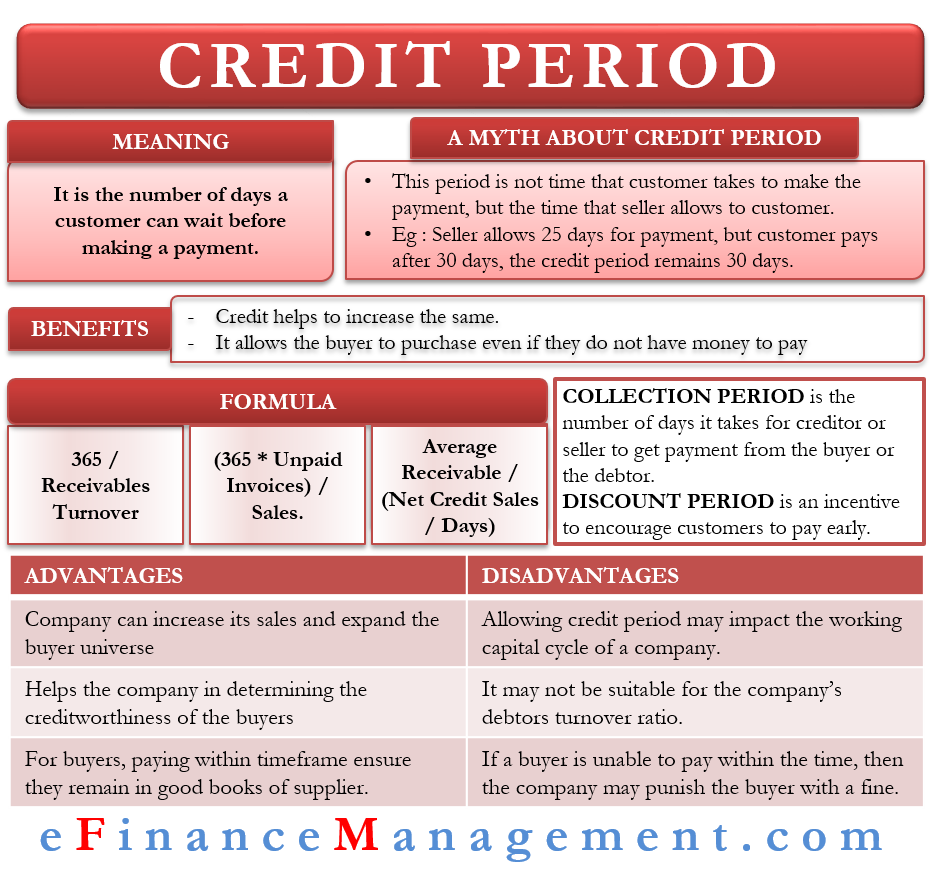
It’s important that your payment policies benefit your business and provide advantages for your customers, such as flexibility, control, competitive pricing, and incentives for positive payment behavior. The most low-risk option, terms that require immediate payment upon delivery, eliminates the possibility of generating bad debt. Offering clients as many payment options as possible increases convenience, which makes them more likely to pay sooner. In addition to cash, checks and credit cards, setting up automatic bill payments through ACH bank transfer can streamline the process.
The formula for the average payment period
This payment term does require you (the business) to expense the project without receiving income, so make sure the payment period is within a reasonable time for you to recover the funds. Partial or full payment in advance can help reduce the risk of cancellation or loss. You can offer discounts for clients who pay in advance and use a partial payment as working funds to complete a client’s project. B2C and eCommerce businesses have a « Terms and Conditions » page instead of a contract.
How to include payment terms
When a company knows its DPO, it can better assess whether it is paying its bills quickly which helps maintain good relationships with suppliers. A company usually wants to balance the benefit of paying a vendor early against the purchasing power lost by spending capital early. In many cases, a company may want to be on the good graces of a supplier to potentially receive goods earlier. HELOC terms typically include a draw period of five to 10 years, followed by a repayment period of 10 to 20 years. During the draw period, you can borrow funds as needed, and in the repayment period, you’ll pay back both principal and interest. As the draw period ends, review your budget to prepare for higher monthly payments, including principal and interest.
What Is A Good Average Payment Period?
With this schedule, employees are paid on the same days each month, such as the 1st and 15th of the month. If one or both of those dates fall on a weekend, the pay date is typically the Friday beforehand. There are various types of pay periods, but the most common are weekly, biweekly, monthly, and semimonthly.
Advantages and Disadvantages of DPO
When beginning to calculate APP for businesses it is important to consider the number of days within the period. For instance, when considering a quarterly report the number of days will vary even if you are considering annual financial statements. Credit arrangements are facilitated from the supplier’s end whenever a company makes a bulk purchase. Thus, it helps calculate the average number of days the company takes to repay the supplier against their dues. However, if the what training is needed to become a bookkeeper is longer then it means that a company is compromising on some important savings by taking longer to settle. Understanding DPO helps businesses optimize their cash flow and negotiate better terms with suppliers.
How to Determine Pay Periods For Your Business?
- Typical DPO values vary widely across different industry sectors and it is not worthwhile comparing these values across different sector companies.
- Understanding HELOC terms, such as how long each period lasts and how payments are structured, is important because these factors can impact your overall financial picture.
- The average collection period is the average number of days it takes for a credit sale to be collected.
- Understanding common payment terms and how to use them in the invoicing process can encourage clients to pay properly and on time.
- With a HELOC, you can access funds during the draw period, making it useful for major expenses like home improvements.
In this instance Company, XY will take 33.7 days to pay its vendors which means it is not subject to late penalties on its purchases. Paying vendors earlier means the company can take advantage of discounts on various products from the suppliers. Once you get the statements you look at the years beginning and ending account payable balances. Last year’s beginning accounts payable balance was $110,000 and the ending accounts payable balance was $95,000. The ratio is typically calculated on a quarterly or annual basis, and it indicates how well the company’s cash outflows are being managed. Paystand is a solution that integrates with your ERP or accounting software.
This pay period can potentially reduce administrative costs and burdens for employers. Employees with monthly salaries usually receive payment on either the first or last day of the month. With this pay period, employees will record their hours for the week and submit a timesheet at the end of the workweek. They will then be paid the following week because it gives the payroll clerk time to make adjustments. Some employees enjoy a weekly pay period because it’s a more consistent cash flow. To calculate, first locate the accounts payable information on the balance sheet, located under current liabilities section.

Companies use the average payment period to see how efficiently they are paying back their creditors, thus assuring that payments are being made in a prompt manner. Ideally, this period can be reduced as much as possible, although it should always be measured in comparison to the credit terms being offered to the company in question. The average payment period calculation can reveal insight about a company’s cash flow and creditworthiness, exposing potential concerns. Or, is the company using its cash flows effectively, taking advantage of any credit discounts? Therefore, investors, analysts, creditors and the business management team should all find this information useful. Since APP is a solvency ratio it helps the business to assess its ability to carry business in the long-term by measuring the ability of the company to meet its obligations.
During a HELOC’s draw period, you can usually choose between making interest-only payments or paying both the principal and interest. Interest-only payments keep your monthly costs low but don’t reduce your loan balance, leaving you with more to repay later. Some companies base installment agreements on time—every three months, for example—or upon the completion of certain project milestones.
